Mysterious Jomsvikings: Fearless Scandinavian Warrior-Brotherhood
Ellen Lloyd - AncientPages.com - The mysterious Jomsvikings were no ordinary Viking warriors.
They were a fearless Scandinavian warrior-brotherhood. Each fighter must obey the 11 military rules set by the order. Violation of these rules could be punished with immediate expulsion from the order.
Jomsvikings were the superheroes of Icelandic Sagas, and they were a legendary mercenary army. They offered their fighting skills and fought for any king who would hire and pay them what they required.
Credit: Adobe Stock - Nejron Photo
No one knows where they lived, and many historians question their existence, but archeological discoveries reveal that Icelandic Sagas about these fearsome warriors can be true.
According to intriguing stories told in the Icelandic Sagas, these courageous Norse warriors were based at Jomsborg, a fortress on the south on the southern Baltic shore.
The Beginning Of the Jomsvikings
It is not entirely clear how and when the order of the Jomsvikings was created. According to some sources, the brotherhood was established and patronized by the Danish king, Harald Bluetooth, King of Denmark. Later, he selected Palnatoke (“Toke the Archer”), a legendary Danish hero and chieftain of the island of Fyn, to be the leader of the Jomsvikings. He also supplied the Jomsvikings with their first fleet of longships. However, the Jómsvíkinga saga says that Jomsborg was founded by Palnatoke alone. Apparently, he received the land to build the fortress of Jomsborg granted him by the Wendish ruler Borislav.
Remarkable Archaeology Discovery In Dorset Offers Evidence Jomsvikings Were Real
For many years the stories of Jomsvikings have been treated as myths, but in 2009 a remarkable archaeology discovery was made. Scientists came across piles of ancient skeletons outside the English town of Weymouth in Dorset county. At first, it was believed these must have been ancient Roman soldiers or Anglo-Saxons, but later investigations revealed the bodies belonged most likely to the legendary Jomsvikings.

Viking mass grave, Weymouth, Dorset offers evidence Jomsvikings were real. Image credit: Oxford University
DNA analysis showed the skeletons belonged to young Scandinavian men in their twenties. Some of them had filed their teeth. The most intriguing part was the marks on the neck and head bones. They showed the men had died by being executed not from behind but when they looked in the eyes of their executor. This execution method is mentioned in one of the Icelandic Sagas that tells of a courageous brotherhood of soldiers who refuse to be killed from behind. To look the person who kills you in the eyes is a sign of courage, and fearlessness was always associated with the Jomsvikings.
The discovery in Dorset can be one of the first pieces of evidence of Jomsvikings’ existence.
The 11 Military Rules Of The Jomsvikings
The Jomsvikings lived by a strict code of conduct, and military discipline was enforced among its members. Each member of the brotherhood must obey the 11 commandments.
- Only men between 18-50 who were skilled warriors were allowed to join the order. No man was accepted without first having to prove his fighting prowess in a fighting duel.
- Family background was unimportant when applying for membership.
- It was forbidden to flee in the face of an enemy of equal or inferior strength.
- Each member was bound to defend his brothers, as well as to avenge their deaths if
- It was forbidden to show fear in words and actions.
- All spoils of battle were to be equally distributed among the entire brotherhood.
- To quarrel was forbidden.
- Speaking ill of one’s fellows was forbidden
- No women or children were allowed within the fortress walls, and none were to be taken captive.
- During winter, no-one was permitted to be absent from Jomsborg for more than three days without the permission of the brotherhood.
- Blood feuds between members must be mediated by Jomsviking leaders.
Possible Runestones Dedicated To The Jomsvikings
In the small village of Sjörup, just outside the town of Ystad, Sweden, there is a runestone that some historians think is dedicated to the Jomsvikings. The stone is erected in memory of a man called Asbjörn who died about 984 years ago because he " did not flee from Uppsala " Another runestone has a similar text mentioning a battle at Uppsala. The choice of words on the runestones suggests that Asbjörn was a Scandinavian warrior brotherhood member. The runes talk about great warriors who were fearless and never fled from their enemies.
According to some sources, Storbjörn, who was the first leader of the Jomsvikings, was killed at Uppsala. Perhaps the man mentioned on the runestone was the great leader of the Jomsvikings.
The Sjörup stone is a runestone just outside Ystad, Sweden. The runes suggest Jomsvikings' leader was killed at Uppsala. Credit: Ole E. Henriksen - Public Domain
The Jomsvikings intervened in dynastic disputes in Sweden in 984 and Norway in 986. In 1000, they fought with distinction at the Battle of Svoldr, one of the greatest battles of Viking Scandinavia. King of Norway, Olaf I Tryggvason, met his death in the Battle of Svolder (c. 1000). He jumped overboard, his heavy equipment quickly taking him to the depths of the Baltic Sea.
In 1009, Jomsvikings were hired by Sweyn Forkbeard (Sven Tveskägg) was king of Denmark, England, and parts of Norway. He was the son of King Harald Bluetooth of Denmark, and the father of Cnut the Great.
The Jomsvikings attacked the English King, Ethelred, as they had been ordered, but in 1013 they changed sides and fought with the English King against Sweyn Forkbeard instead. In 1015, the Jomsvikings changed sides once again, and this time, they fought for Cnut the Great. In 1016, Cnut the Great became King of England.
What happened to the Jomsvikings after this remains unknown. The information is not revealed in the Icelandic Sagas. Most likely, the Jomsvikings joined forces with Cnut the Great’s bodyguards and became one united military force.
Jomsborg was attacked and destroyed in 1043 by Norway’s King Magnus the Good. According to the Icelandic Sagas, Norway’s King killed many people, burning and destroying the city and surrounding areas. Nothing was left but chaos.
Updated on March 1, 2024
Written by - Ellen Lloyd – AncientPages.com
Copyright © AncientPages.com All rights reserved. This material may not be published, broadcast, rewritten or redistributed in whole or part without the express written permission of AncientPages.com
Expand for references
More From Ancient Pages
-
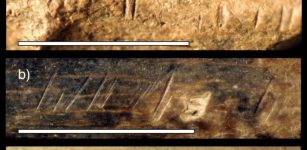 Humans’ Evolutionary Relatives Butchered One Another 1.45 Million Years Ago
Ancient Symbols | Jun 26, 2023
Humans’ Evolutionary Relatives Butchered One Another 1.45 Million Years Ago
Ancient Symbols | Jun 26, 2023 -
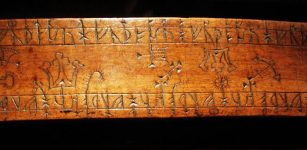 Vikings And The Runic Calendar
Artifacts | Mar 4, 2016
Vikings And The Runic Calendar
Artifacts | Mar 4, 2016 -
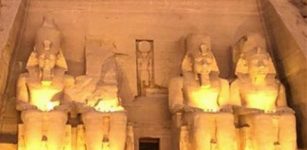 Magnificent Solar Alignment Phenomenon In Abu Simbel – The Sun Illuminates The Face Of Pharaoh Ramses II
Featured Stories | Nov 11, 2020
Magnificent Solar Alignment Phenomenon In Abu Simbel – The Sun Illuminates The Face Of Pharaoh Ramses II
Featured Stories | Nov 11, 2020 -
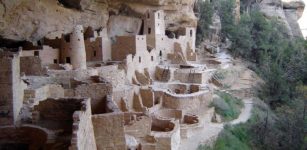 Sophisticated Masonry In Anasazi Dwelling Ruins At Mesa Verde National Park, Colorado, USA
Civilizations | Aug 11, 2015
Sophisticated Masonry In Anasazi Dwelling Ruins At Mesa Verde National Park, Colorado, USA
Civilizations | Aug 11, 2015 -
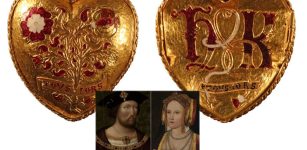 Beautiful Tudor Gold Pendant Linked To Henry VIII And Katherine Of Aragon Discovered By A Metal-Detectorist
Archaeology | Feb 1, 2023
Beautiful Tudor Gold Pendant Linked To Henry VIII And Katherine Of Aragon Discovered By A Metal-Detectorist
Archaeology | Feb 1, 2023 -
 On This Day In History: Great Siege of Malta: Ottoman Forces Made Attempt To Conquer Malta And Failed – On May 18, 1565
News | May 18, 2016
On This Day In History: Great Siege of Malta: Ottoman Forces Made Attempt To Conquer Malta And Failed – On May 18, 1565
News | May 18, 2016 -
 Did The Viking Blood Eagle Ritual Ever Happen Or Was It A Misunderstood Story?
Archaeology | Dec 21, 2021
Did The Viking Blood Eagle Ritual Ever Happen Or Was It A Misunderstood Story?
Archaeology | Dec 21, 2021 -
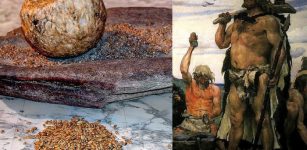 Stone Age Humans Unlocked The Glucose In Plants 40,000 Years Ago
Archaeology | Apr 1, 2020
Stone Age Humans Unlocked The Glucose In Plants 40,000 Years Ago
Archaeology | Apr 1, 2020 -
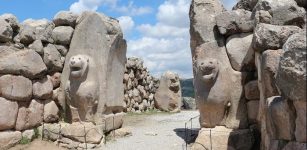 Yazılıkaya: One Of The Most Striking Religious Shrines Of The Hittite Empire
Featured Stories | Jul 4, 2023
Yazılıkaya: One Of The Most Striking Religious Shrines Of The Hittite Empire
Featured Stories | Jul 4, 2023 -
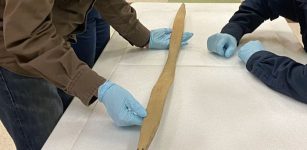 Still Intact 460-Year-Old Bow Found Underwater In Alaska Baffles Scientists – Where Did It Come From?
Archaeology | Mar 17, 2022
Still Intact 460-Year-Old Bow Found Underwater In Alaska Baffles Scientists – Where Did It Come From?
Archaeology | Mar 17, 2022 -
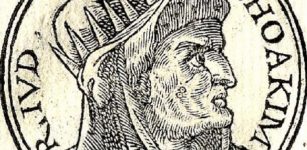 Kingdoms Of Judah And Babylon Remained In Long-Lasting Conflict
Featured Stories | Sep 5, 2019
Kingdoms Of Judah And Babylon Remained In Long-Lasting Conflict
Featured Stories | Sep 5, 2019 -
 Surprising Discovery Of A Perfectly Ancient Road Shows Romans Moved Deeper Into Wales Than Previously Thought
Archaeology | Jul 2, 2022
Surprising Discovery Of A Perfectly Ancient Road Shows Romans Moved Deeper Into Wales Than Previously Thought
Archaeology | Jul 2, 2022 -
 Satellite Images Of 66 New Roman Army Sites Show More Clues About One Of The Empire’s Most Infamous Conflicts
Archaeology | Dec 23, 2020
Satellite Images Of 66 New Roman Army Sites Show More Clues About One Of The Empire’s Most Infamous Conflicts
Archaeology | Dec 23, 2020 -
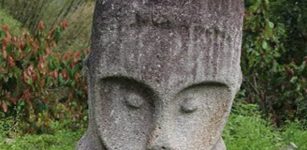 Mysterious Prehistoric Statues In Bada Valley, Indonesia Surrounded With Countless Legends
Civilizations | Jan 9, 2019
Mysterious Prehistoric Statues In Bada Valley, Indonesia Surrounded With Countless Legends
Civilizations | Jan 9, 2019 -
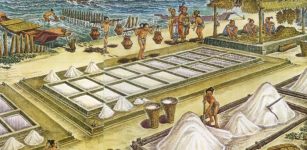 Salt Workers’ Residences At Underwater Maya Site – Identified
Archaeology | Nov 22, 2021
Salt Workers’ Residences At Underwater Maya Site – Identified
Archaeology | Nov 22, 2021 -
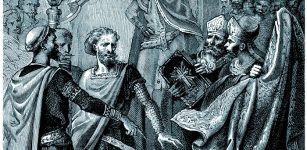 William The Conqueror: Ruthless And Powerful Ruler Who Changed Britain Forever
Featured Stories | Feb 25, 2023
William The Conqueror: Ruthless And Powerful Ruler Who Changed Britain Forever
Featured Stories | Feb 25, 2023 -
 Ancient Secrets Of Mistletoe – Sacred Celtic Plant With Magical Powers
Ancient Traditions And Customs | Dec 17, 2024
Ancient Secrets Of Mistletoe – Sacred Celtic Plant With Magical Powers
Ancient Traditions And Customs | Dec 17, 2024 -
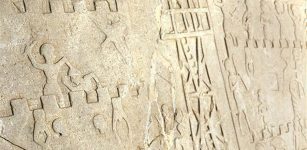 Harput Relief: 4,000-Year-Old Artifact Pushes Back History Of Region By 1,000 Years
Archaeology | Mar 23, 2017
Harput Relief: 4,000-Year-Old Artifact Pushes Back History Of Region By 1,000 Years
Archaeology | Mar 23, 2017 -
 Patara’s 2,400-Year-Old Ancient Kitchen And ‘Women’s Room’ Unearthed
Archaeology | Oct 7, 2020
Patara’s 2,400-Year-Old Ancient Kitchen And ‘Women’s Room’ Unearthed
Archaeology | Oct 7, 2020 -
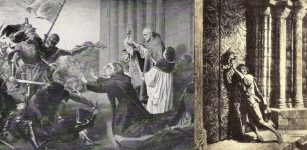 Medieval Criminals Could Avoid Persecution By Claiming Sanctuary In Churches
Ancient History Facts | Mar 3, 2017
Medieval Criminals Could Avoid Persecution By Claiming Sanctuary In Churches
Ancient History Facts | Mar 3, 2017


